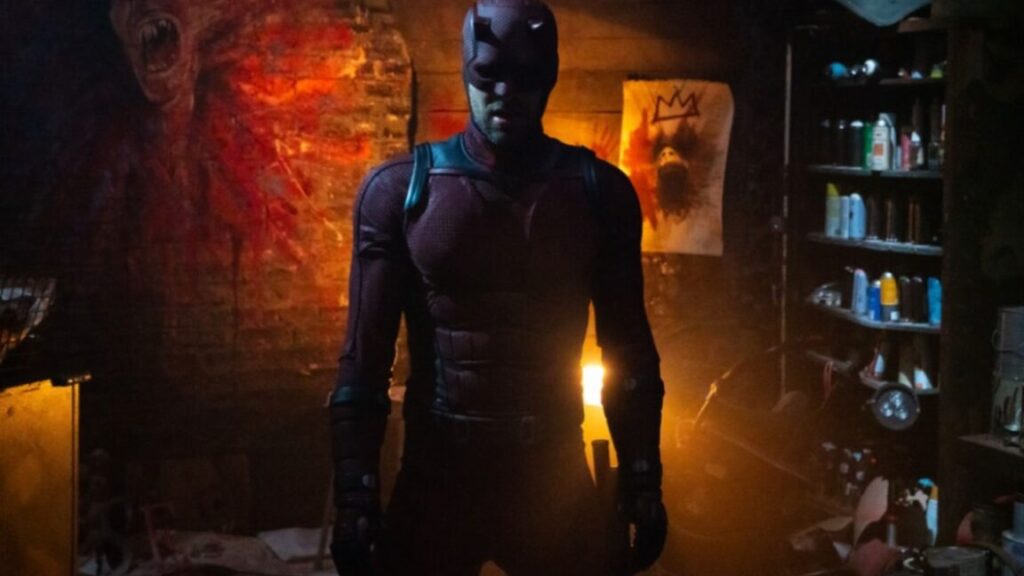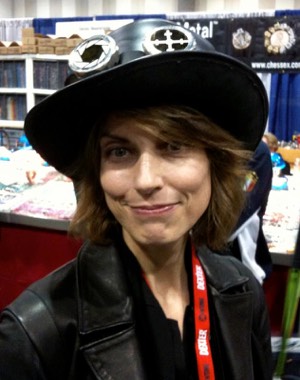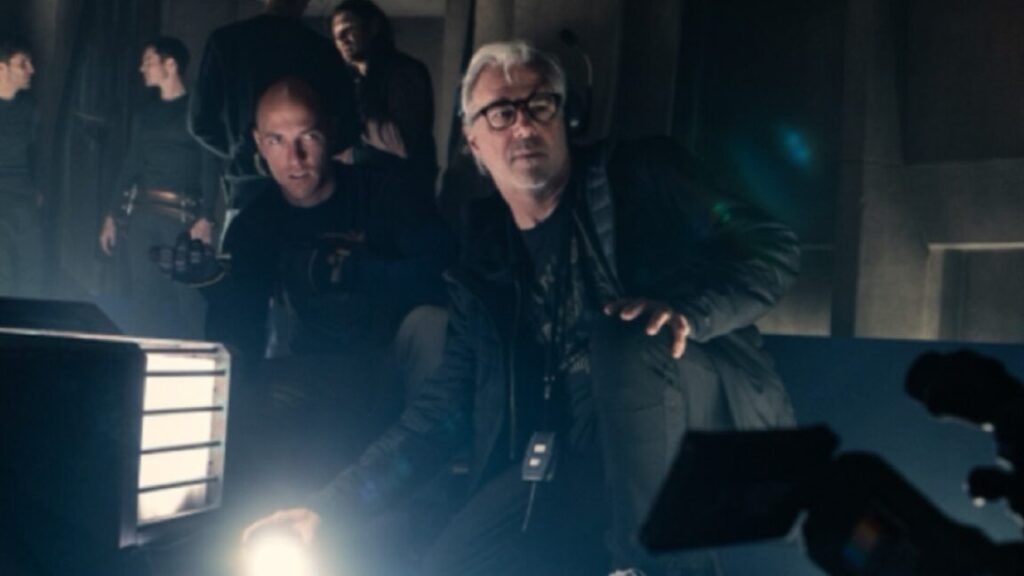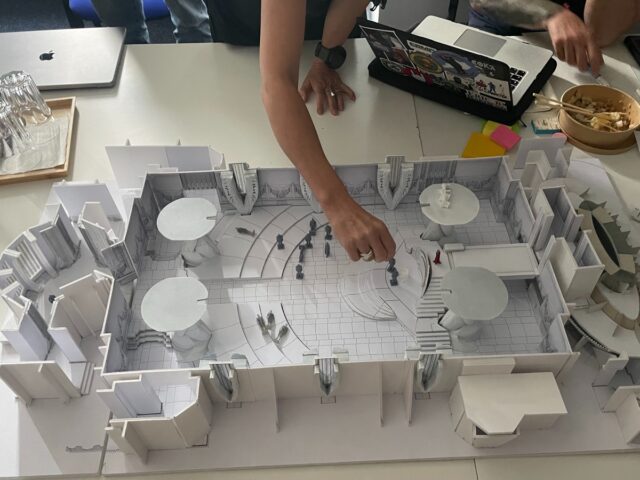Creating a distinctive aesthetic for Daredevil: Born Again
Ars chats with cinematographer Hillary Fyfe Spera on bringing a 1970s film vibe to the Marvel series.
Enthusiasm was understandably high for Daredevil: Born Again, Marvel’s revival of the hugely popular series in the Netflix Defenders universe. Not only was Charlie Cox returning to the title role as Matt Murdock/Daredevil, but Vincent D’Onofrio was also coming back as his nemesis, crime lord Wilson Fisk/Kingpin. Their dynamic has always been electric, and that on-screen magic is as powerful as ever in Born Again, which quickly earned critical raves and a second season that is currently filming.
(Some spoilers for the series below, but no major reveals beyond the opening events of the first episode.)
Born Again was initially envisioned as more of an episodic reset rather than a straight continuation of the serialized Netflix series. But during the 2023 Hollywood strikes, with production halted, the studio gave the show a creative overhaul more in line with the Netflix tone, even though six episodes had been largely completed by then. The pilot was reshot completely, and new footage was added to subsequent episodes to ensure narrative continuity with the original Daredevil—with a few well-placed nods to other characters in the MCU for good measure.
It was a savvy move. Sure, fans were shocked when the pilot episode killed off Matt’s best friend and law partner, Foggy Nelson (Elden Hensen), in the first 10 minutes, with his grief-stricken law partner, Karen Page (Deborah Ann Woll), taking her leave from the firm by the pilot’s end. But that creative choice cleared the decks to place the focus squarely on Matt’s and Fisk’s parallel arcs. Matt decides to focus on his legal work while Fisk is elected mayor of New York City, intent on leaving his criminal life behind. But each man struggles to remain in the light as the dark sides of their respective natures fight to be released.
The result is a series that feels very much a part of its predecessor while still having its own distinctive feel. Much of that is due to cinematographer Hillary Fyfe Spera, working in conjunction with the broader production team to bring Born Again‘s aesthetic to vivid life. Fyfe Spera drew much of her inspiration from 1970s films like Taxi Driver, The French Connection, The Conversation, and Klute. “I’m a big fan of films of the ’70s, especially New York films,” Fyfe Spera told Ars. “It’s pervaded all of my cinematography from the beginning. This one in particular felt like a great opportunity to use that as a reference. There’s a lot of paranoia, and it’s really about character, even though we’re in a comic book environment. I just thought that the parallels of that reference were solid.”
Ars caught up with Fyfe Spera to learn more.
Karen, Matt, and Foggy enjoy a moment of camaraderie before tragedy strikes. Marvel Studios/Disney+
Ars Technica: I was surprised to learn that you never watched an episode of the original Netflix series when designing the overall look of Born Again. What was your rationale for that?
Hillary Fyfe Spera: I think as a creative person you don’t want to get too much in your head before you get going. I was very aware of Daredevil, the original series. I have a lot of friends who worked on it. I’ve seen sequences, which are intimidatingly incredible. [My decision] stemmed from wanting to bring something new to the table. We still pay homage to the original; that’s in our blood, in our DNA. But there was enough of that in the ether, and I wanted to think forward and be very aware of the original comics and the original lore and story. It was more about the identities of the characters and making sure New York itself was an authentic character. Looking back now, we landed in a lot of the same places. I knew that would happen naturally.
Ars Technica: I was intrigued by your choice to use anamorphic lenses, one assumes to capture some of that ’70s feel, particularly the broad shots of the city.
Hillary Fyfe Spera: It’s another thing that I just saw from the very beginning; you just get a feeling about lenses in your gut. I know the original show was 1.78; I just saw this story as 2.39. It just felt like so many of the cityscapes exist in that wide-screen format. For me, the great thing about anamorphic is the relationship within composition in the lens. We talk about this dichotomy of two individuals or reflections or parallel worlds. I felt the widescreen gave us that ability. Another thing we do frequently is center framing, something the widescreen lens can really nail. Also, we shoot with these vintage-series Panavision anamorphics, which are so beautiful and textured, and have beautiful flaring effects. It brought organic textured elements to the look of the show that were a little out of the box.
Ars Technica: The city is very much a character, not just a showy backdrop. Is that why you insisted on shooting as much as possible on location?
Hillary Fyfe Spera: We shot in New York on the streets, and that is a challenge. We deal with everything from weather to fans to just New Yorkers who don’t really care, they just need to go where they’re going. Rats were a big part of it. We use a lot of wet downs and steam sources to replicate what it looks like outside our window every day. It’s funny, I’ll walk down the street and be like, “Oh look at that steam source, it’s real, it’s coming out of the street.”
Shooting a show of this scale and with its demands in a practical environment is such a fun challenge, because you have to be beholden to what you’re receiving from the universe. I think that’s cool. One of my favorite things about cinematography is that you can plan it to an inch of its life, prepare a storyboard and shot list as much as you possibly can, and then the excitement of being out in the world and having to adapt to what’s happening is a huge part of it. I think we did that. We had the confidence to say, “Well, the sun’s setting over there and that looks pretty great, let’s make that an element, let’s bring it in.” Man, those fluorescent bulbs that we can’t turn off across the street? They’re part of it. They’re the wrong color, but maybe they’re the right color because that’s real.
Ars Technica: Were there any serendipitous moments you hadn’t planned but decided to keep in the show anyway?
Hillary Fyfe Spera: There’s one that we were shooting on an interior. It was on a set that we built, where Fisk has a halo effect around his head. It’s a reflection in a table. That set was built by Michael Shaw, our production designer. One of our operators happened to tilt the camera down into the reflection, and we’re like, “Oh my God, it’s right there.” Of course, it ended up in the show; it was a total gimme. Another example is a lot of our New York City street stuff, which was completely just found. We just went out there and we shot it: the hotdog carts, the streets, the steam, the pigeons. There’s so many pigeons. I think it really makes it feel authentic.
Ars Technica: The Matt Murdock/Wilson Fisk dynamic is so central to the show. How does the cinematography visually enhance that dynamic?
Hillary Fyfe Spera: They’re coming back to their identities as Kingpin and Daredevil, and they’re wrestling with those sides of themselves. I think in Charlie and Vincent’s case, both of them would say that neither one is complete without the other. For us, visually, that’s just such a fun challenge to be able to show that dichotomy and their alter egos. We do it a lot with lensing.
In Fisk’s case, we use a lot of wide-angle lenses, very close to him, very low angle to show his stature and his size. We use it with a white light in the pilot, where, as the Kingpin identity is haunting him and coming more to the surface, we show that with this white light. There’s the klieg lights of his inauguration, but then he steps into darkness and into this white light. It’s actually a key frame taken directly from the comic book, of that under light on him.
For Matt Murdock, it’s similar. He is wrestling with going back to being Daredevil, which he’s put aside after Foggy’s death. The red blinking light for him is an indication of that haunting him. You know it’s inevitable, you know he’s going to put the suit back on. It’s who these guys are, they’re damaged individuals dealing with their past and their true selves. And his world, just from an aesthetic place, is a lot warmer with a lot more use of handheld.
We’re using visual languages to separate everyone, but also have them be in the same conversation. As the show progresses, that arc is evolving. So, as Fisk becomes more Kingpin, we light him with a lot more white light, more oppression, he’s the institution. Matt is going into more of the red light environment, the warmer environment. There’s a diner scene between the two of them, and within their coverage Matt is shot handheld and Fisk is shot with a studio mode with a lockdown camera. So, we’re mixing, we’re blending it even within the scenes to try and stay true to that thesis.
Ars Technica: The episodes are definitely getting darker in terms of the lighting. That has become quite an issue, particularly on television, because many people’s TVs are not set up to be able to handle that much darkness.
Hillary Fyfe Spera: Yeah, when I visit my parents, I try to mess with their TV settings a little. People are just watching it in the wrong way. I can’t speak for everyone; I love darkness. I love a night exterior, I love what you don’t see. For me, that goes back to films like The French Connection. It’s all about what you don’t see. With digital, you see so much, you have so much latitude and resolution that it’s a challenge in the other way, where we’re trying to create environments where there is a lot of contrast and there is a lot of mystery. I just think cinematographers get excited with the ability to play with that. It’s hard to have darkness in a digital medium. But I think viewers on the whole are getting used to it. I think it’s an evolving conversation.
Ars Technica: The fight choreography looks like it would be another big challenge for a cinematographer.
Hillary Fyfe Spera: I need to give a shoutout to my gaffer, Charlie Grubbs, and key grip, Matt Staples. We light an environment, we shoot those sequences with three cameras a lot of times, which is hard to do from a lighting perspective because you’re trying to make every shot feel really unique. A lot of that fight stuff is happening so quickly that you want to backlight a lot, to really set out moments so you can see it. You don’t want to fall into a muddy movement world where you can’t really make out the incredible choreography. So we do try and set environments that are cinematic, but that shoot certain directions that are really going to pinpoint the movement and the action.
It’s a collaboration conversation with Phil Silvera, our stunt coordinator and action director: not only how we can support him, but how we can add these cinematic moments that sometimes aren’t always based in reality, but are just super fun. We’ll do interactive lighting, headlights moving through, flares, just to add a little something to the sequence. The lighting of those sequences are as much a character, I think, as the performances themselves.
Ars Technica: Will you be continuing the same general look and feel in terms of cinematography for S2?
Hillary Fyfe Spera: I’ve never come back for a second season. I love doing a project and moving on, but what was so cool about doing this one was that the plan is to evolve it, so we keep going. The way we leave things in episode nine—I don’t know if we’re picking up directly after, but there is a visual arc that lands in nine, and we will continue that in S2, which has its own arc as well. There are more characters and more storylines in S2, and it’s all being folded into the visual look, but it is coming from the same place: the grounded, ’70s New York look, and even more comic cinematic moments. I think we’re going to bring it.
Jennifer is a senior writer at Ars Technica with a particular focus on where science meets culture, covering everything from physics and related interdisciplinary topics to her favorite films and TV series. Jennifer lives in Baltimore with her spouse, physicist Sean M. Carroll, and their two cats, Ariel and Caliban.
Creating a distinctive aesthetic for Daredevil: Born Again Read More »




